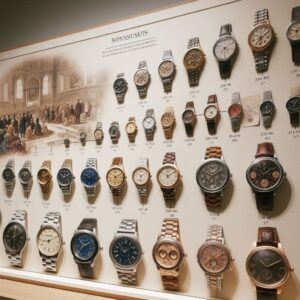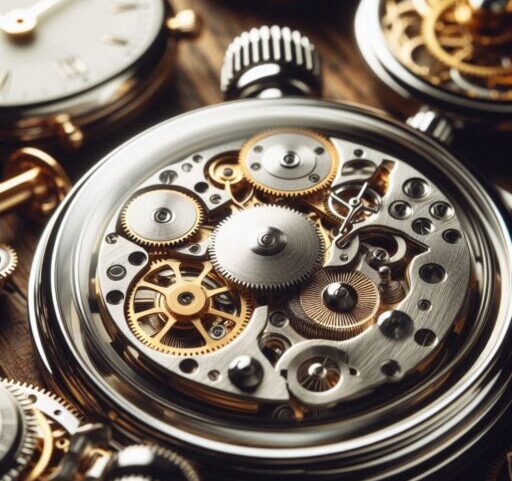
Wrist watches pack a lot more history than you might expect. These small timekeepers go far beyond simply showing the hour; they’re little windows into decades of changing style, new ideas, and daily life. Most people today think of a wristwatch as an accessory or even a fashion statement, but the story from pocket clocks to sleek, reliable wristmounted tickers is filled with cool stories and clever inventions.
The origins of the wrist watch reach back further than most realize. Early versions popped up in the late 19th century, mostly as jewelry for women. Men stuck with pocket watches, seeing wrist watches as delicate or even a bit showy. That changed when military needs pushed for practicality over style. During the late 1800s and early 1900s, especially in World War I, soldiers needed a way to tell time during missions without fumbling in their pockets. That led to the first true mens wrist watches, which soon became standard-issue for officers and pilots. Necessity truly helped shift how the world saw watches.
As demands grew, new ideas really got rolling. Swiss and German watchmakers started making reliable, dustproof, and even waterproof designs by the 1920s and 1930s. Brands like Rolex and Omega started showing up on wrists everywhere, making watches both status symbols and practical tools. By then, wrist watches had become a sign of modern style and efficiency, not just a handy way to stay on schedule or a mark of good taste.
Mechanical movements are where the artistry really pops. Gears, springs, and jewel bearings made these little machines tick with surprising accuracy. Watchmakers put their personal touch into every detail, from the sweep of the second hand to the engravings on the case. Even with new technology cropping up, there’s something especially satisfying about a wellmade mechanical watch keeping perfect time with just a few turns of the crown.
Wrist watches truly exploded into everyday life in the postwar years. Reliable mass production took off, making watches more affordable for everyone. The 1950s and 60s gave us iconic styles: thin, elegant dress watches and tough tool watches for divers or pilots. People began collecting different watches for different occasions, marking milestones and passing pieces down as treasured mementos. Some of the most exciting advancements, like the selfwinding movement and luminous dials, came during this vibrant era.
The Quartz Revolution and Its Impact
The 1970s brought a complete shakeup thanks to quartz technology. Suddenly, watches ran on batteries and tiny electronic components. The accuracy beat mechanical watches by a landslide, and costs dropped so much that nearly anyone could own a reliable timepiece. Digital displays, alarms, and playful styles all showed up as quartz watches took over the market. Some folks miss the craftsmanship of mechanical watches, but nobody can ignore how much quartz changed the way we think about timekeeping. The colorful digital faces and playful straps of that era are now making a comeback with younger collectors keen on retro styles.
Despite all the technology, the story of the wrist watch is a personal one. Heirloom pieces and collector’s favorites remind us of special times. A watch might be the first gift from a loved one, a reward for a big achievement, or a token marking a milestone. Each scratch or faded numeral tells a story and holds memories. Collectors, hobbyists, and even casual fans love talking about what’s on their wrist and why it matters to them. Online forums and watch clubs make it easy to share finds, get repair advice, or just nerd out about movements and design quirks. This sense of shared adventure connects people from different countries and generations.
Tough, fashionable, sentimental—wrist watches have managed to stay relevant even in the era of smartphones and smartwatches. Whether your taste leans toward vintage styles or the latest digital wonder, there’s something special about the weight of a watch and the quiet tick reminding you of how much history you’re carrying around each day. Many watch lovers say that glancing at an artfully crafted wristwatch brings a level of satisfaction that checking a phone never will.
Modern Appreciation and Collecting Culture
Wearing a wrist watch today feels a bit like joining a global club. Vintage watches draw in those looking for a classic vibe and a bit of nostalgia. Modern watches win over fans who want hightech features and bold style. Both have serious staying power, and the variety out there is almost endless. Watch collecting blends practical knowledge with a love for design and history. The community loves sharing tips or debating favorite brands. There’s camaraderie, but also a respect for the different stories and backgrounds each piece carries.
Restoring and preserving older watches is pretty popular right now. Watchmakers and hobbyists work tirelessly to keep vintage models ticking, sometimes mixing modern technology with retro craftsmanship. Fixing up a family heirloom or hunting for that rare find at a flea market means getting hands-on with tiny details and big stories. Some even set out to recreate lost classics, learning traditional techniques in the process. It’s a hobby you can grow with for years: always learning and always stumbling upon something new strapped to your wrist. Whether you’re just starting out or have a display case full of treasures, being part of the wristwatch world means being part of an ongoing story that bridges style, personal history, and innovation.

Leave a Reply